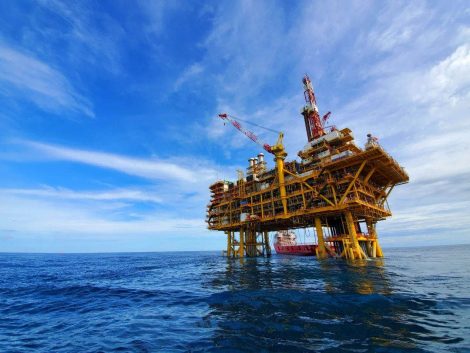-
China launches offshore CCUS demonstration project
Date posted:
-
-
Post Author
Tracey Biller
-

China Daily reports that a secure “prison” has been constructed to house greenhouse gas deep beneath the South China Sea.
The Enping 15-1 oil platform, which hosts China’s first megaton-sized offshore CCUS project, is located about 200 kilometres southwest of Shenzhen, Guangdong province. The platform is Asia’s largest offshore oilfield and is operated by China National Offshore Oil Corporation (CNOOC).
The facility is designed to capture, secure, and store 1.5 million metric tons of carbon dioxide annually. This is equivalent to planting 14 million trees or taking 1 million cars off the road for 30 years. Since its launch in June 2023, 180,000 tons of carbon dioxide have been injected and stored beneath the seabed, marking a major step in China’s fight against climate change.
The Enping 15-1 oil reservoir was selected for China’s offshore CCUS demonstration project due to its unusually high CO2 content. Previously, extraction would have been unviable since tapping such reserves would release carbon dioxide in the reservoir into the atmosphere, risking corrosion of platforms and pipelines while polluting the environment.
Enabled by recent advances in CCUS technology, “CO2 flooding” traps the carbon dioxide that emerges from extraction and injects it for further oil extraction and permanent sequestration. In this circular process, captured CO2 is transported via tanker trucks or pipelines and injected into oil reservoirs. The gas increases pressure, displacing scattered crude oil and boosting extraction rates.
Traditional oil recovery methods typically extract just 18 to 20 percent of a reservoir’s crude oil. However, CO2 flooding can increase recovery rates by 7 to 15 percent and extend the reservoir’s life span by 15 to 20 years. This is according to Tang Yong, a professor at Southwest Petroleum University’s Petroleum Engineering School.
CO2 flooding will begin in May. Previously, captured CO2 had only been stored in a geological “dome” — a seabed structure 800 meters deep and located 3 kilometres from the platform. Over the next 10 years, the project will inject over 1 million tons of CO2 into the Enping 15-1 oilfield, increasing crude oil production by 200,000 tons.
